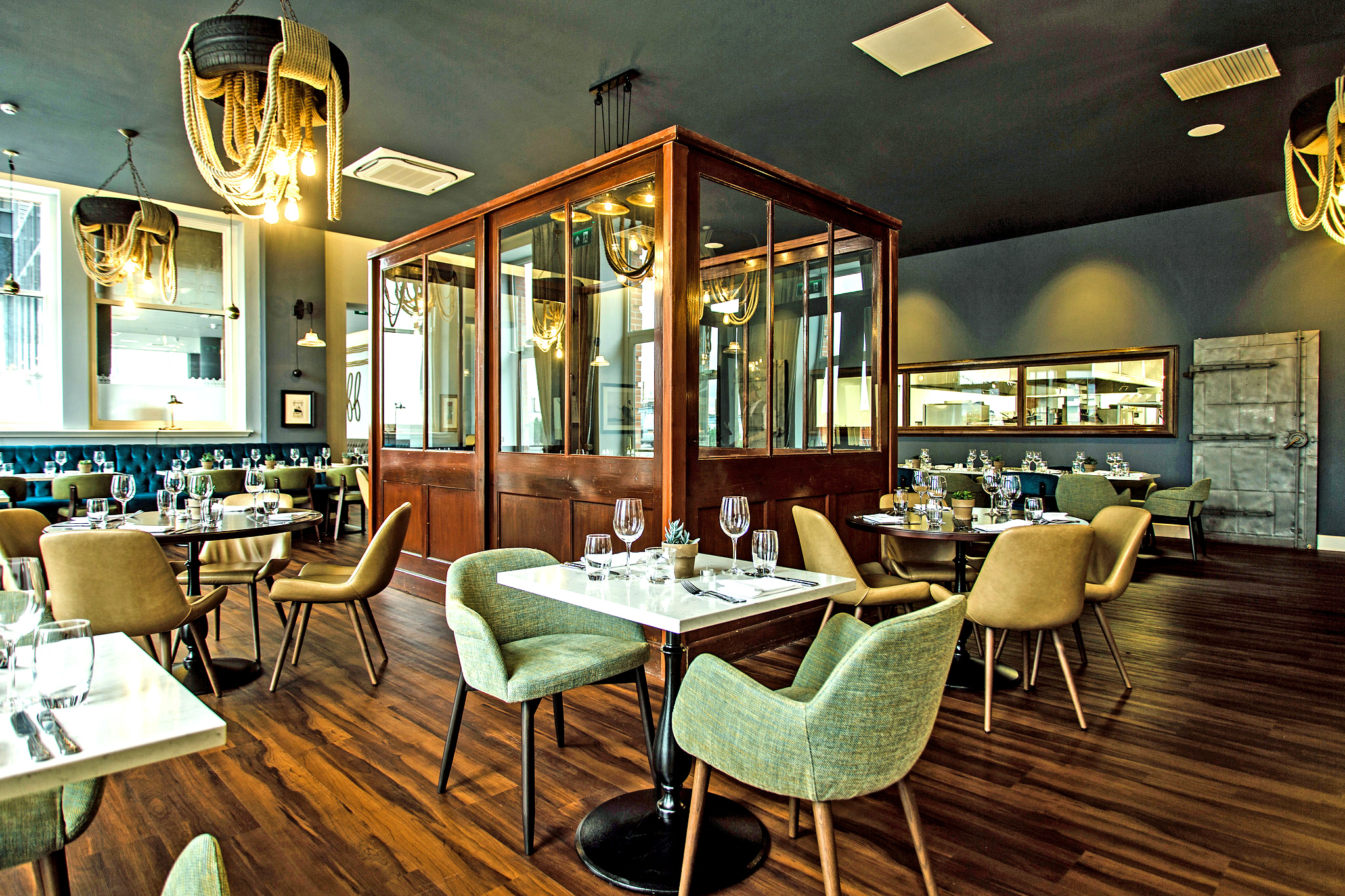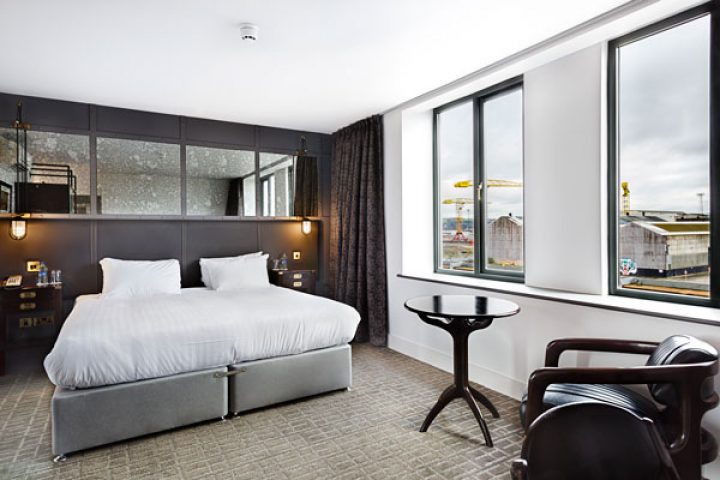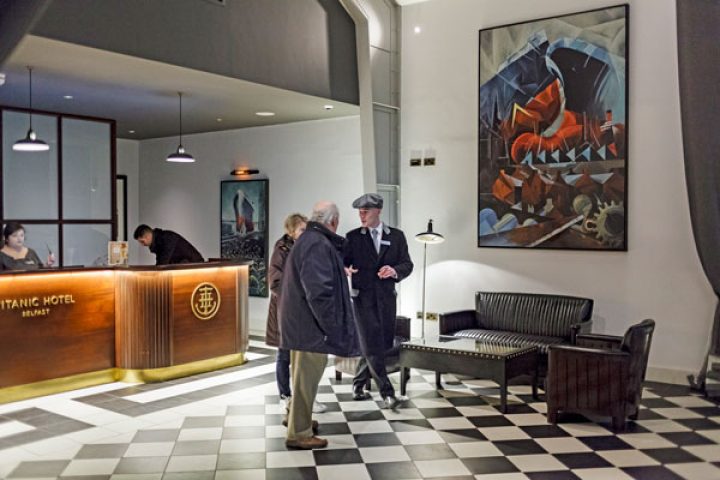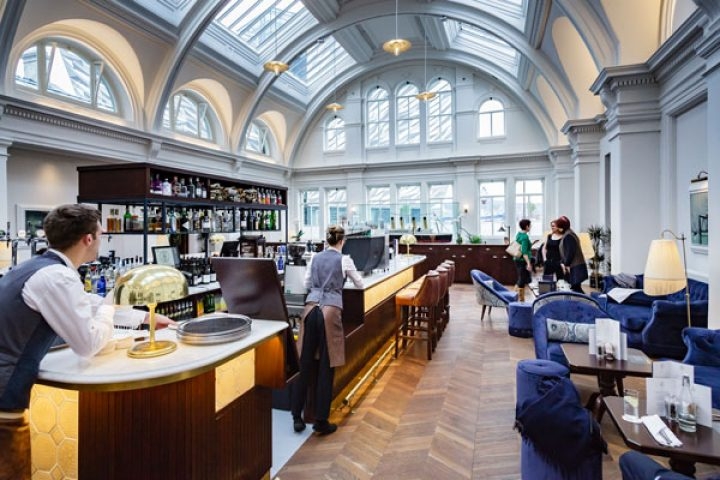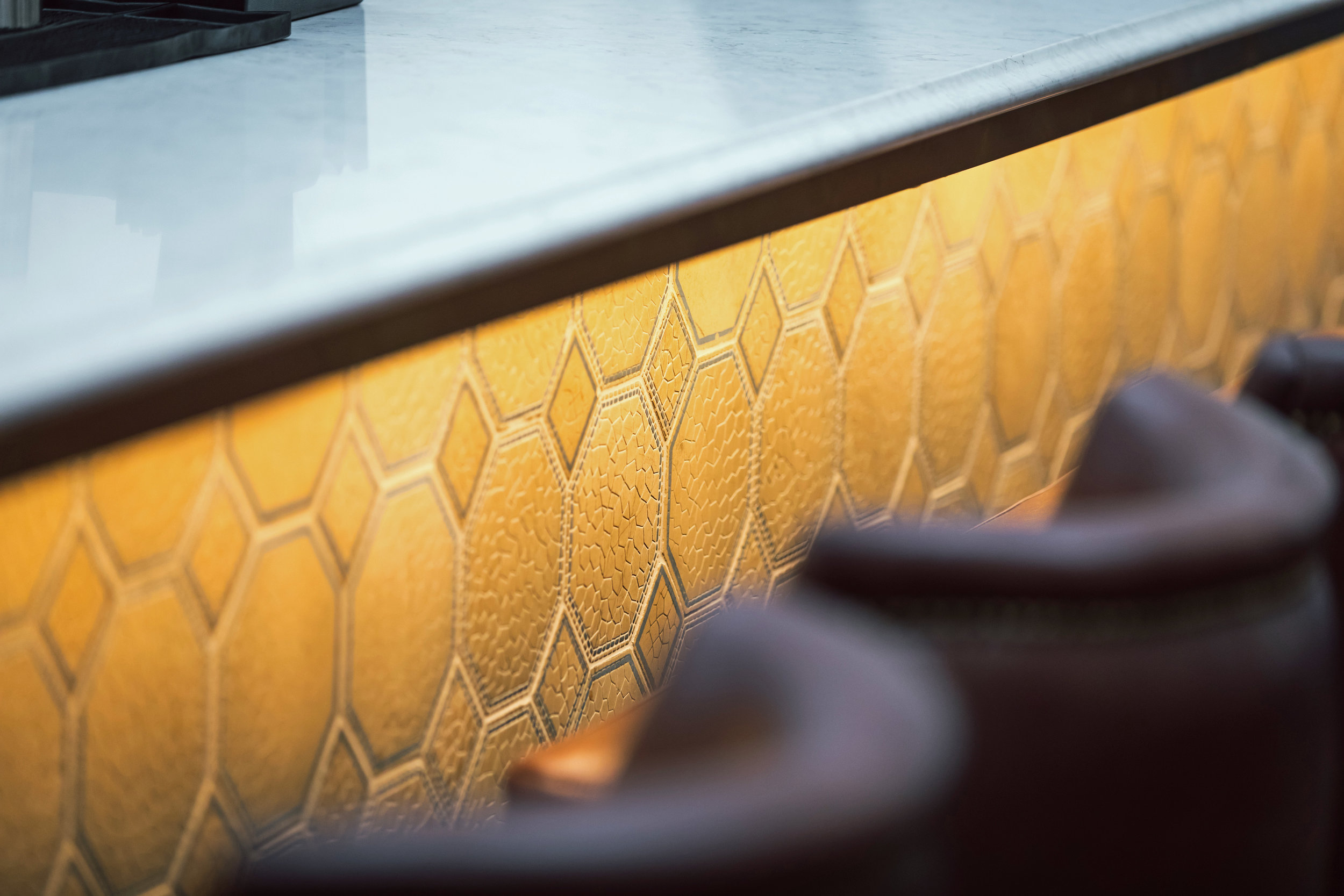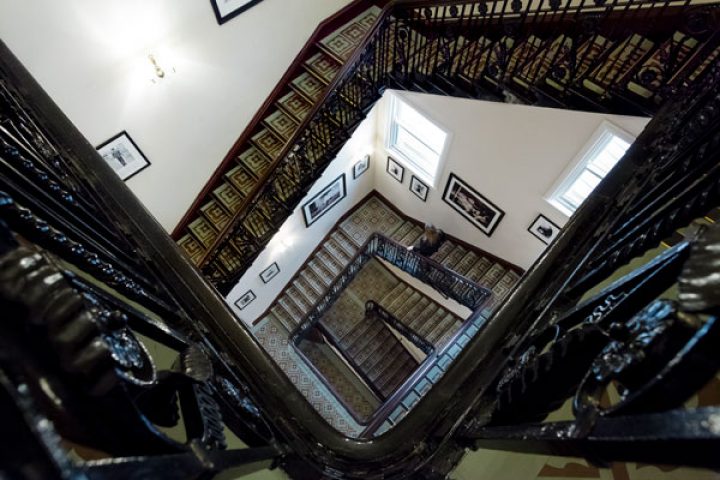The bar is an island in the middle of the room, clad with the same tiles that once graced the pool and the first-class bathrooms of Titanic. Workers found the hundred year old tiles when they began to strip out the building after many years of disuse.
“Titanic Hotel Belfast is no museum, but it is much more than a hotel,” explains Adrian McNally, General Manager of the hotel, which opened in September. Not just because all the memorabilia will make the hearts of “Titanic” fans race faster here. It’s because a piece of Belfast’s maritime history is hidden in every nook and cranny of the hotel, characterising the identity of the city far more than the notorious unrest of the Sixties, Seventies and Eighties. No company embodied the city more than Harland & Wolff, founded in the 1800s
Apart from the unfortunate Titanic, the world’s largest ship builder produced more than 1700 other ships, from ferries to luxury liners. They were proud to be the most important employer in the city and truly this legacy is the foundation of the hotel. “High regard for the past runs deep in these walls,” says hotel boss McNally. And he's right. The bright light that filters through the atelier windows of the white cupola roof into today’s bar, was once used by the shipyard’s draughtsman in ‘Drawing Office Two’ to design ships. In the neighbouring fine dining restaurant, The Wolff Grill, the menus are stored in antique filing cabinets, and the centre of the room is dominated by a real Draughtsman’s Office: a space that now serves as a private booth, complete with elegantly decorated table.
McNally came on board three months before the Titanic opened and is completely in his element. “It's always lovely to open a hotel,” he explains, “and even more so one that is very close to people’s hearts”. After around twenty years in the USA, Kenya and China, the Northern Irish hotelier, born in Armagh, is working at home for the first time in years. He was a host for the 2013 G8 summit in the Lough Erne Resort in Enniskillen, before leading the five-star hotel Culloden in Belfast as GM to the title of best hotel in Northern Ireland. “It already had everything a very good hotel needs,” according to McNally. “I just had to get the team motivated to win the award.”
In the Titanic Belfast, the 47-year-old sees himself both as a manager and motivator. “Our mission and vision is to offer the best service in the most remarkable heritage hotel in Belfast.” This historic building is a special responsibility. “There is no more iconic site in Belfast. The shipyard and the Titanic are intrinsically linked to Belfast’s spirit. We will be judged by what we do with this new opening and how we move forward.”
Close contact with guests is therefore of vital importance. “Hotels and luxury service are not static. We need to constantly review and improve our work to achieve our goals.” His team therefore discusses each individual guest comment, positive or negative alike, and draws conclusions from each.
The Irish owners, the Doherty family, are also closely connected to the project. The portfolio of their Harcourt real estate and hotel company based in Dublin comprises six hotels in the British Isles and two in the Caribbean. But the Titanic Quarter is the company’s most ambitious project yet. Over 75 hectares in size, Harcourt has completed the major undertaking of reviving the former shipyard into a new European destination. The heart of it all is the record-breaking Titanic Belfast Museum, which soars 38.5 metres into the sky only a few steps from the hotel – just like the ship that was once launched right beside it.
From post-industrial wasteland to dynamic district
The proximity of this visitor magnet, which is also one of the largest conference spaces in Belfast, likely makes occupancy targets easier for Adrian McNally. The film studio that makes the “Game of Thrones” series is also located in the Titanic Quarter, along with the offices of more than one hundred firms.
Hard to imagine then, that ten years ago, the district was probably one of the bleakest in Belfast. In its heyday, the shipyard employed 35,000 staff, but with the decline of the shipping industry, the desolation spread wide. The shipyard continues to take repair orders to this day, but the last ship was launched from the yard in 2003 and the headquarters has stood empty since 1989.
"Not a trace of the former bleakness"
So the rebirth of the shipyard has electrified the whole city, whose population has closely watched every single step of the 28-million-pound renovation. “To excel as a hotel, we had to restore the historical parts of the building to their former glory,” explains McNally.
John Paul Doherty was responsible for this aspect, son of Harcourt founder Pat Doherty. As the creative head of the company, he was responsible for the design of the interiors.
“The twin drawing offices, one of which houses the bar and the other our ballroom, are the only remaining example of Victorian naval architecture in the world,” says Doherty, the respect in his voice is unmistakable.
Fusing past and present
This meant staying as close to the original as possible, with every single detail. The memorabilia ranges from wrought-iron railings on the staircases and the mahogany revolving door of the lobby right through to the ship manuals and notebooks that belonged to Titanic's designer Thomas Andrews.
Much of it was still there, and Doherty was able to bring together other pieces with the help of historians and collectors. What hadn’t survived was faithfully recreated – such as the floors, which were tiled in Victorian style.
The public spaces are decorated with photographs of the shipyard and its ships, portraits of prominent passengers, but also modern pieces of art. The Art Déco style of the rooms is a nod to the era of the ocean-going giants. The closets are imitations of those that were in first class on the Titanic; maritime objects such as ship lanterns provide design accents.
The “Corridor of Power” on the ground floor comprises meeting rooms in the former offices of shipyard managers including “Thomas Andrews’ office”, the sanctum of Titanic’s chief designer, who went down with the ship. The wardrobe, fireplace and window frames have been preserved, as Andrews left them behind in April 1912.
“Getting the balance between historical heritage and new technology was the biggest challenge,” says Adrian McNally, “so we had to pull some tricks”. Luxuriant chandeliers camouflage energy-saving bulbs. The telegraph office in the lobby, where the message about the loss of the Titanic was received, has been preserved. But these days, any messages are passed through the building using lightning-fast WiFi.


